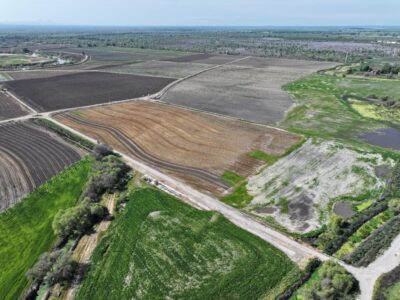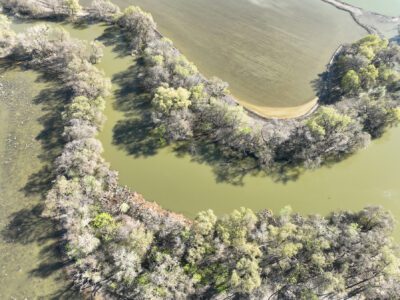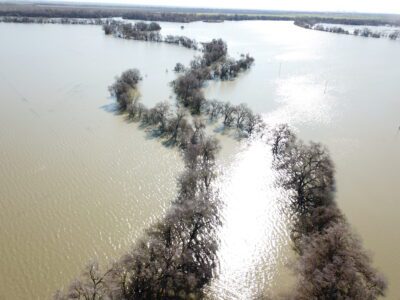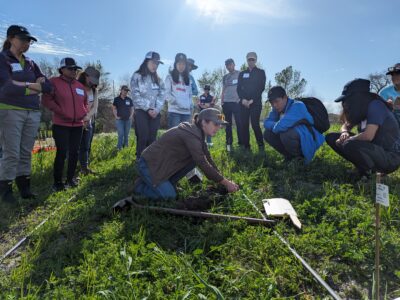California’s rivers are its bloodstream: jobs, freeways, agriculture, entertainment, technology, housing and finance are all driven by them. What better way to care for our communities than to bring life back to rivers so that nature, our children, our seniors – all of us – can cherish and enjoy them? Just as in our bodies, “circulation” is not a “luxury.” Rivers are essential to California’s vitality.- Dr. Richard Jackson, Professor Emeritus, Fielding School of Public Health, University of California, Los Angeles
We deserve a pat on the back. We’ve made it through a month of quarantine, and it seems that we are doing reasonably well. The virus transmission and mortality rates in California are lower than most states, despite our population being so much larger. But, my heart is broken for the unemployed, currently estimated at 22 million nationwide. The stress and disruption to so many people’s livelihoods in this crisis will leave a lasting impression on all of us.
I have the privilege to live and work in agricultural communities in the Central Valley where the work ethic is robust, adaptation is the way of life, and unfortunately, employment has been insecure for decades. Jobless rates in interior counties in California already exceed statewide averages, sometimes reaching more than 20% as a result of the seasonal nature of agricultural work.
What comes along with this type of employment insecurity may be illustrative of our COVID future and might give us some insights for how we should prepare to respond.

The Central Valley of California has higher rates of childhood asthma and obesity, and type 2 diabetes than coastal counties. Some of these challenges are driven by economic stressors, and many others by environmental health concerns – lack of clean air and water.
In a post COVID economic depression, even if government interventions keep most of us in our homes, we should expect to see more negative health effects. Unemployment can predict hunger and homelessness, and even for families who can stay in their homes, declining health outcomes over the long term. That is, unless we can envision and invest in a new approach to managing our landscape and our economy.
The state of California – the sixth largest economy in the world- is a powerful leader in times of crisis. This week, the California Department of Fish and Wildlife identified as “essential’ habitat restoration that can be done in a virus – safe way. Likewise, our state has a big role to play in setting essential priorities, post-Covid, for a more healthy, sustainable, and equitable future.
River parkways are connective trails and natural areas along rivers and creeks that link homes, parks, workplaces, and schools.

The impact of River Partners’ work to improve the environment is well-established. We grow forests that generate clean air and filter pollutants from water. Our projects create freshwater supply and sequester carbon to ameliorate atmospheric carbon impacts. And we can directly affect public health by connecting communities to their riverways .
A 2014 paper from the Center for Occupational and Environmental Health at UCLA accumulates some of the public health benefits of river parkways, including improvements to:
- Physical activity through recreation and active commuting;Mental health through exercise and contact with nature;Children’s health through play that improves physical health, attention capacity, mental and social well-being;Sense of community and well-being stimulating community culture change, pride and empowerment

One way that state leadership can, today, set us on a path to rebound better and stronger than before is to encourage and endorse River Parkways as essential and critical infrastructure, eligible for funding from transportation and education programs, especially in particularly economically disadvantaged or impacted areas.
This is not a new idea, we already do some of it in specialty programs that were resoundingly supported by voters, such as the Urban Greening or River Parkways Programs. But with a new designation as “essential”, we could make green space for public health a priority, not a special program.
Let’s rebound from this crisis with a dedication to acting faster, thinking larger, and prioritizing a more connected and healthy future for us all. Let’s finally take that step in our civic development to welcome back a connection with nature and all the health and disaster resilience improvements that come with it. Let’s make sure our children will have green places to play and our workers can easily get in the physical activity they need to stay away from the hospital and clinical treatments.
There’s never been a better time for leading for change than today. If you’d like to learn more about the amazing river parkways already developed in California, please enjoy the following:




